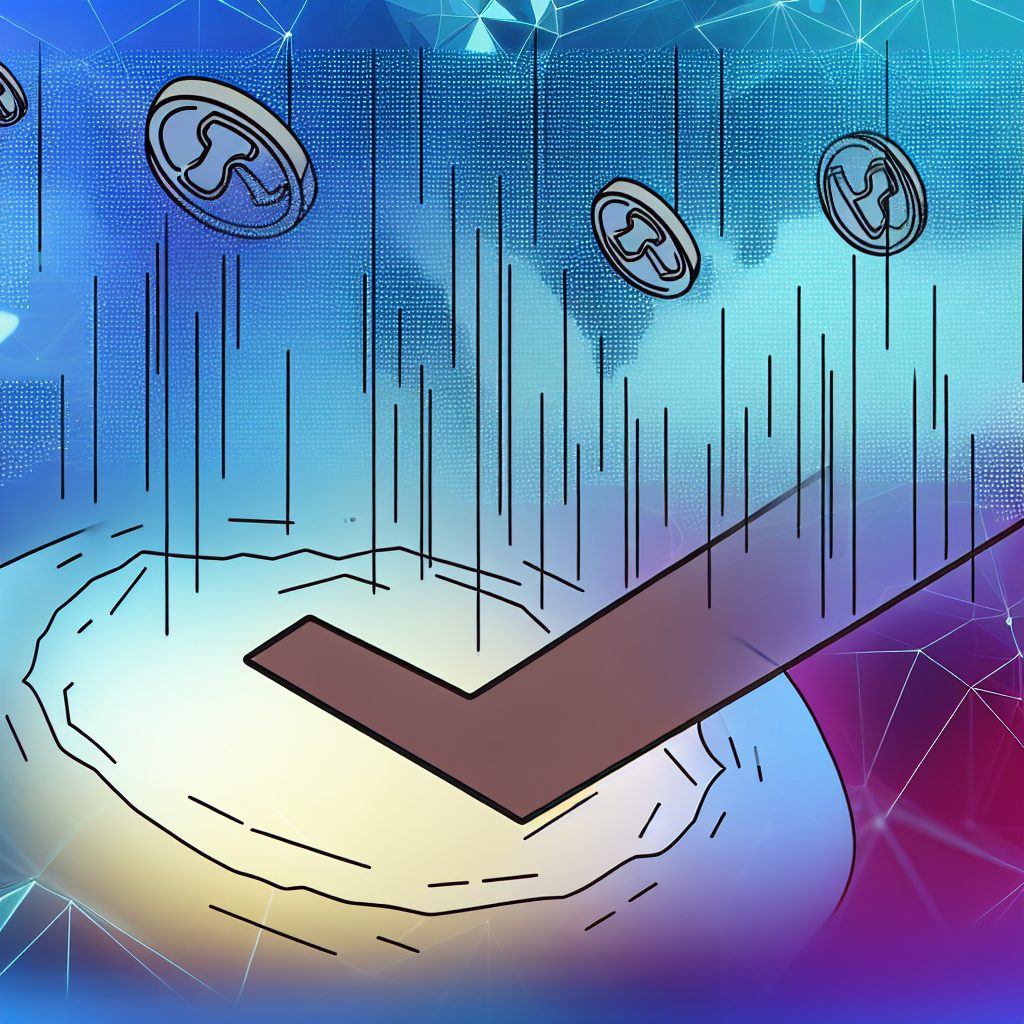Understanding Slippage in DeFi Trades
In the rapidly evolving world of decentralized finance (DeFi), traders often encounter various challenges that can impact their trading experience. One such challenge is slippage, a term that has become increasingly relevant as more individuals engage in cryptocurrency trading. This article delves into the concept of slippage, its causes, implications, and strategies to mitigate its effects in DeFi trades.
What is Slippage?
Slippage refers to the difference between the expected price of a trade and the actual price at which the trade is executed. This phenomenon can occur in any market, but it is particularly pronounced in the cryptocurrency space due to its inherent volatility and the nature of decentralized exchanges (DEXs).
When a trader places an order, they may expect to buy or sell an asset at a specific price. However, due to market fluctuations, the price can change between the time the order is placed and when it is executed. This discrepancy is what traders refer to as slippage.
Types of Slippage
Slippage can be categorized into two main types:
- Positive Slippage: This occurs when a trade is executed at a better price than expected. For example, if a trader places a buy order at $100, but the order is filled at $99, the trader benefits from positive slippage.
- Negative Slippage: This is the more common scenario where a trade is executed at a worse price than anticipated. For instance, if a trader places a sell order at $100, but the order is filled at $101, the trader experiences negative slippage.
Causes of Slippage in DeFi
Several factors contribute to slippage in DeFi trades:
- Market Volatility: Cryptocurrencies are known for their price volatility. Rapid price changes can lead to slippage, especially in high-volume trades.
- Order Size: Large orders can significantly impact the market price, especially in less liquid markets. When a trader places a large order, it can cause the price to move against them.
- Liquidity: The availability of liquidity in a market affects slippage. In markets with low liquidity, even small trades can lead to significant price changes.
- Transaction Speed: In DeFi, the speed at which transactions are processed can also lead to slippage. Delays in transaction confirmation can result in trades being executed at different prices.
Implications of Slippage
Slippage can have several implications for traders:

- Increased Trading Costs: Negative slippage can lead to higher trading costs, reducing overall profitability.
- Impact on Strategy: Traders who rely on precise entry and exit points may find their strategies compromised by slippage.
- Market Sentiment: High levels of slippage can indicate market instability, potentially deterring new traders from entering the market.
Real-World Examples of Slippage
To illustrate the impact of slippage, consider the following scenarios:
In May 2021, during the peak of the cryptocurrency bull run, many traders experienced significant slippage on decentralized exchanges like Uniswap. For instance, a trader attempting to swap Ethereum (ETH) for a lesser-known altcoin might have expected a 1% slippage but ended up with 5% due to the high volatility and low liquidity of the altcoin market.
Another example occurred during the launch of new tokens on DEXs. When a new token is listed, the initial trading volume can be extremely high, leading to rapid price changes. Traders attempting to buy the token may find that their orders are filled at prices much higher than expected, resulting in substantial negative slippage.
How to Minimize Slippage in DeFi Trades
While slippage is an inherent risk in trading, there are several strategies traders can employ to minimize its impact:
- Use Limit Orders: Instead of market orders, traders can use limit orders to specify the maximum price they are willing to pay or the minimum price they are willing to accept. This can help avoid negative slippage.
- Trade During High Liquidity Periods: Engaging in trades during times of high liquidity can reduce the likelihood of slippage. This often coincides with peak trading hours when more participants are active in the market.
- Break Up Large Orders: Instead of placing a single large order, traders can break it into smaller orders to minimize the impact on the market price.
- Monitor Market Conditions: Keeping an eye on market trends and volatility can help traders time their trades more effectively, reducing the risk of slippage.
Slippage Tolerance Settings
Many decentralized exchanges offer slippage tolerance settings that allow traders to specify the maximum amount of slippage they are willing to accept for a trade. This feature can be particularly useful in volatile markets.
For example, if a trader sets a slippage tolerance of 2%, the trade will only execute if the slippage does not exceed this threshold. If the market price moves beyond this limit, the trade will not be executed, protecting the trader from unexpected losses.
Case Studies: Slippage in Action
Examining specific case studies can provide deeper insights into how slippage affects trading outcomes:
In 2022, a trader attempted to execute a large buy order for a popular DeFi token on a DEX. The trader set a slippage tolerance of 1%. However, due to sudden market volatility caused by a major news event, the price of the token surged. The order was executed at a slippage of 3%, resulting in a significant increase in the cost of acquiring the tokens. This case highlights the importance of understanding market conditions and setting appropriate slippage tolerances.
Another case involved a liquidity provider on a DEX who experienced slippage while attempting to withdraw funds. The provider had not anticipated the impact of their withdrawal on the liquidity pool, leading to a higher price for the tokens they were trying to sell. This situation underscores the need for liquidity providers to be aware of how their actions can affect market dynamics.
FAQs About Slippage in DeFi Trades
What is an acceptable level of slippage?
The acceptable level of slippage varies by trader and market conditions. Generally, a slippage tolerance of 1-2% is common for most trades, but this can be adjusted based on market volatility and liquidity.
Can slippage be avoided entirely?
While it is impossible to eliminate slippage completely, traders can take steps to minimize its impact by using limit orders, trading during high liquidity periods, and setting appropriate slippage tolerances.
How does slippage affect automated trading strategies?
Automated trading strategies can be significantly impacted by slippage, as unexpected price changes can lead to different outcomes than anticipated. Traders should account for slippage when backtesting their strategies.
Is slippage more common on DEXs than centralized exchanges?
Yes, slippage is often more pronounced on decentralized exchanges due to lower liquidity and higher volatility compared to centralized exchanges, which typically have more robust order books.
Conclusion
Slippage is a critical concept for anyone involved in DeFi trading. Understanding its causes, implications, and strategies for mitigation can significantly enhance a trader’s experience and profitability. By employing techniques such as limit orders, monitoring market conditions, and adjusting slippage tolerance settings, traders can navigate the complexities of slippage more effectively.
As the DeFi landscape continues to evolve, staying informed about market dynamics and trading strategies will be essential for success. For the latest updates and insights into the cryptocurrency market, consider visiting Bitrabo.
For more discussions and insights, feel free to connect with me on social media: X, Instagram, and Threads.
Disclaimer: This article is for informational purposes only and should not be considered financial advice. Always conduct your own research before making investment decisions.
The Crypto Watchlist of the Week 🔎
Subscribe to receive expert-curated projects with real potential—plus trends, risks, and insights that matter. Get handpicked crypto projects, deep analysis & market updates delivered to you.


